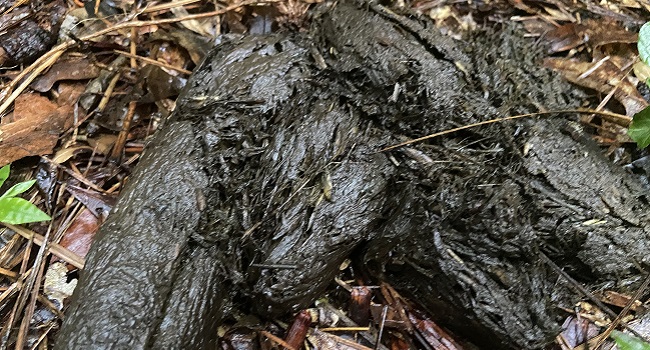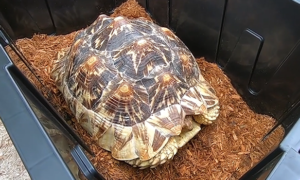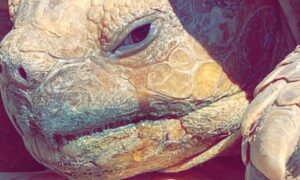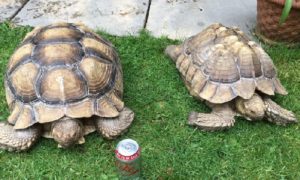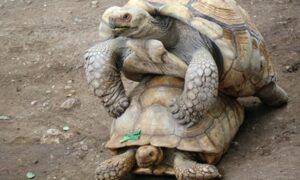You can tell a lot from a tortoise’s poop – mostly diet and illness related. Which is why it is important to check your sulcata tortoise poop.
Healthy sulcata tortoise poop is a dark green, brown or almost black in color. Tortoise poop should be wet and moist, but not runny. You should see a lot of grass in the sulcata tortoise poop.
Tortoise Poop is Dry
If you notice that the poop is dry, it can mean that the tortoise is dehydrated. The poop may be dry or crumbly. Increase soaks and ensure fresh water is available daily. Make sure that baby sulcata tortoises have a water bowl in the enclosure. Ensure that adults have a large pool or water bowl, as well.
For baby and young tortoises, you want to soak them in warm water daily. Soak larger sulcatas at least once a week.
Also increase water-heavy foods. Offer romaine, cucumber and other foods that are rich in moisture.
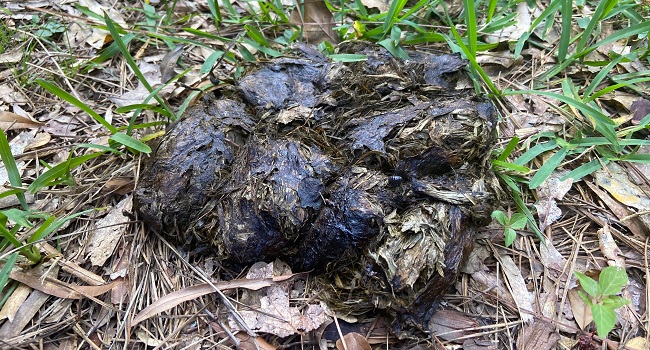
Tortoise Poop is Runny
Healthy tortoise poop should be wet and moist, but not runny. If the sulcata tortoise poop is runny, it can mean a number of things.
Incorrect diet
Sulcata tortoises should be eating 80% grass and hay. You should only offer vegetables as treats and kept at 10% or less of the diet. Fruits should be avoided. A proper sulcata diet will be high in fiber and low in proteins.
Parasites
If your sulcata is eating a correct diet, you want to rule out parasites. Parasites in the gut can cause runny poop. You will want to contact your reptile veterinarian to see if he can do a fecal test to check for parasites. If your sulcata has parasites, you may also notice other signs of illness like diarrhea, lethargy and lack of appetite.
Tortoise Poop VS Urate
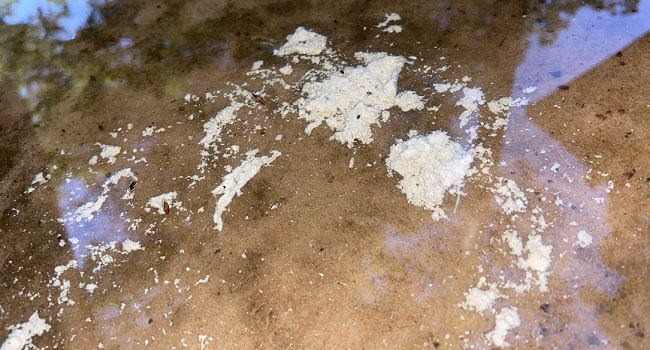
Sulcata tortoise poop is a dark color. On the other hand, urate is going to be white or off-white in color. It should be pasty, but sometimes, it can be dry and crumbly. Urate is the combination of uric acid, mineral, proteins and other body waste that the kidneys have filtered out. It is stored and released by the bladder. You want your sulcata tortoise pass urates at least a few times a week.
If the urate is consistently gritty, your tortoise may be dehydrated. Consider increasing baths.
If you notice an increase in urates, your tortoise may be eating too many greens that are high in oxalic acid. Reduce the amount of dark leafy greens, like spinach and kale.
A build-up of urates can cause bladder stones, which is why it is very important to ensure that your tortoise is passing the urate on a regular basis.

